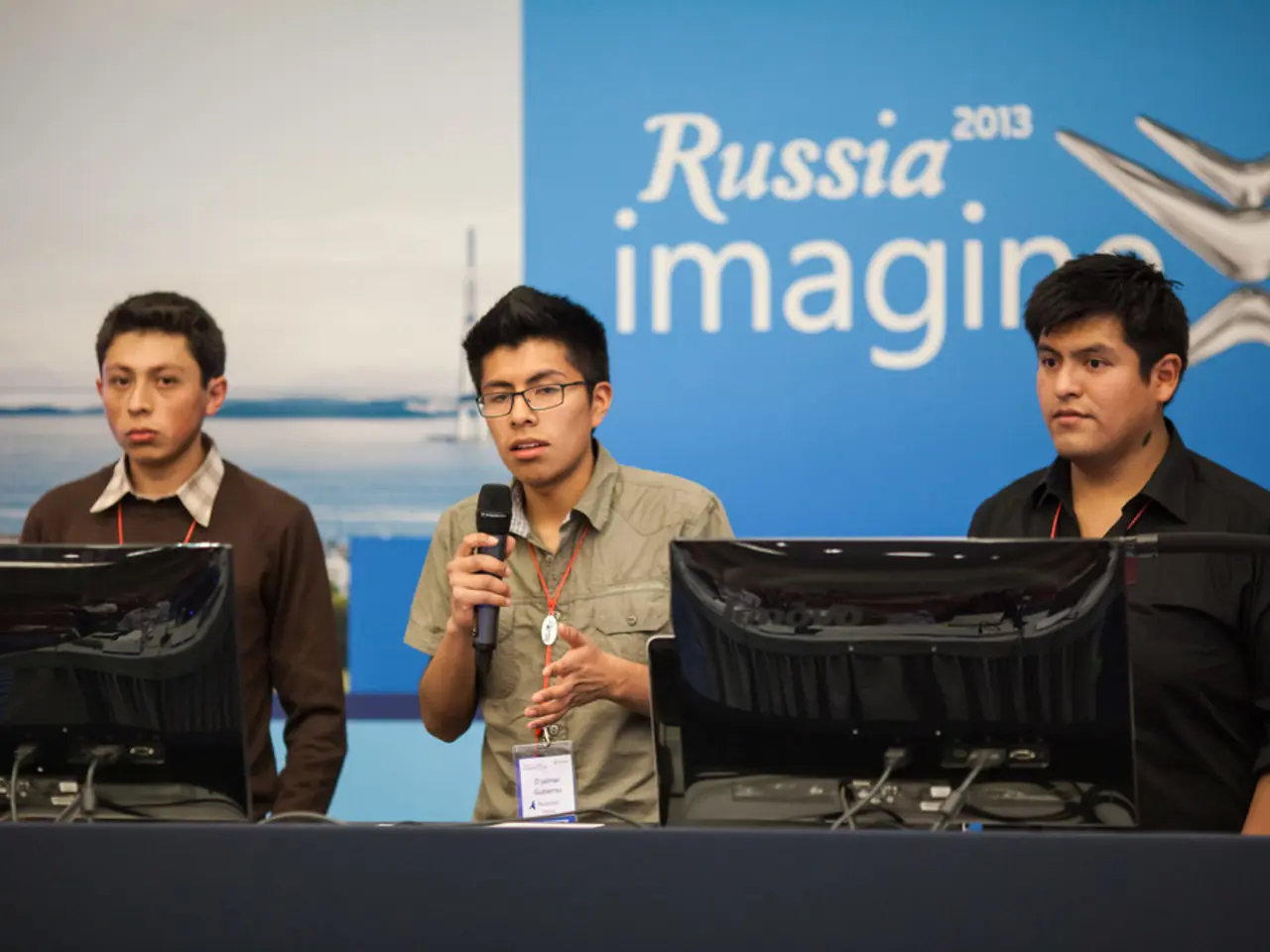Authority Overreach: The Methods Totalitarian Regimes Employ to Exert Digital Dominance
In a significant shift from traditional surveillance methods, machine learning, analytics, and algorithms are now integral components of the political machinery in countries like China, Iran, and Russia. This technological evolution has given birth to a new form of totalitarianism, where technology itself dominates the environment of control rather than just serving as a tool[1].
The emergence of this techno-authoritarian model is marked by several key factors:
- Pervasive Surveillance Systems: Governments harness AI-driven surveillance cameras, facial recognition, and data analytics to monitor citizens' movements, behaviours, and emotions in real-time, often without the need for extensive human informants[1][3].
- Censorship and Information Control: Algorithms and digital platforms are manipulated to filter, block, or bias information flow, effectively shaping public discourse and suppressing dissent[1].
- Legal and Technological Frameworks: In Russia, laws such as the Yarovaya laws and infrastructure projects like the "Sovereign Internet" restrict access to external information and facilitate state control over internal digital communications[1].
- Automated Policing and Repression: These technologies augment traditional authoritarian tools by enabling far-reaching, faster repression of individuals or groups deemed threats, with minimal human oversight required[3].
- Normalization of Digital Authoritarianism: Technology has become deeply embedded in political power structures, with technology itself becoming the vertical through which control is exercised[1].
This techno-authoritarian model is not confined to traditional authoritarian states. It is influencing how radical right governments in democracies also adopt AI surveillance to repress and polarize political opposition[3]. Furthermore, authoritarian states like Russia and China are strategically exporting or supporting these methods as part of their broader geopolitical goals, including disinformation and interference in democratic societies[5].
Resistance to this digital repression is not absent. In Iran, for instance, users quickly switch to proxies, mesh networks, and satellite links during internet disruptions during protests, allowing information to still flow, albeit slower and riskier[1]. In Myanmar, activists disabled military drones using spoofed signals[1].
However, the battle against digital totalitarianism is a complex and ongoing one. Encryption has become a quiet revolution, with platforms like Signal, ProtonMail, and Tor providing invisible defenses against surveillance and censorship[1]. Yet, censorship is now automated, with AI systems scanning messages, images, and videos in real-time and deleting content that contains keywords or images deemed inappropriate[1].
The Panopticon concept, where individuals are controlled through the fear of being watched, has been reborn in digital infrastructure in countries like China, Iran, and Russia[1]. In this new digital age, individuals leave digital traces voluntarily, which governments can exploit for control without needing traditional methods like informants or paper questionnaires[1].
As we move forward, the struggle against digital totalitarianism will require a multi-faceted approach, involving technological innovation, legal reform, and international cooperation to safeguard individual freedoms and democratic values in the digital era.
References: [1] Rankin, J. (2021). Digital authoritarianism: How technology is fuelling a new era of totalitarianism. The Guardian. [2] Rankin, J. (2021). How China's surveillance state uses technology to control its citizens. The Guardian. [3] Rankin, J. (2021). How Russia uses technology to control its citizens. The Guardian. [4] Rankin, J. (2021). How Iran uses technology to control its citizens. The Guardian. [5] Rankin, J. (2021). How authoritarian states are exporting digital repression. The Guardian.
The integration of cybersecurity measures becomes crucial in the fight against digital totalitarianism, as technology is increasingly used for political control and surveillance in countries like China, Iran, and Russia. The adoption of encrypted communication platforms can serve as a defensive strategy against the automated censorship and surveillance systems that characterize techno-authoritarian regimes.
Moreover, the export of digital repression methods by authoritarian states, such as Russia and China, raises concerns about the global proliferation of techno-authoritarianism, emphasizing the need for international cooperation in addressing this issue and safeguarding democratic values in the digital era.








